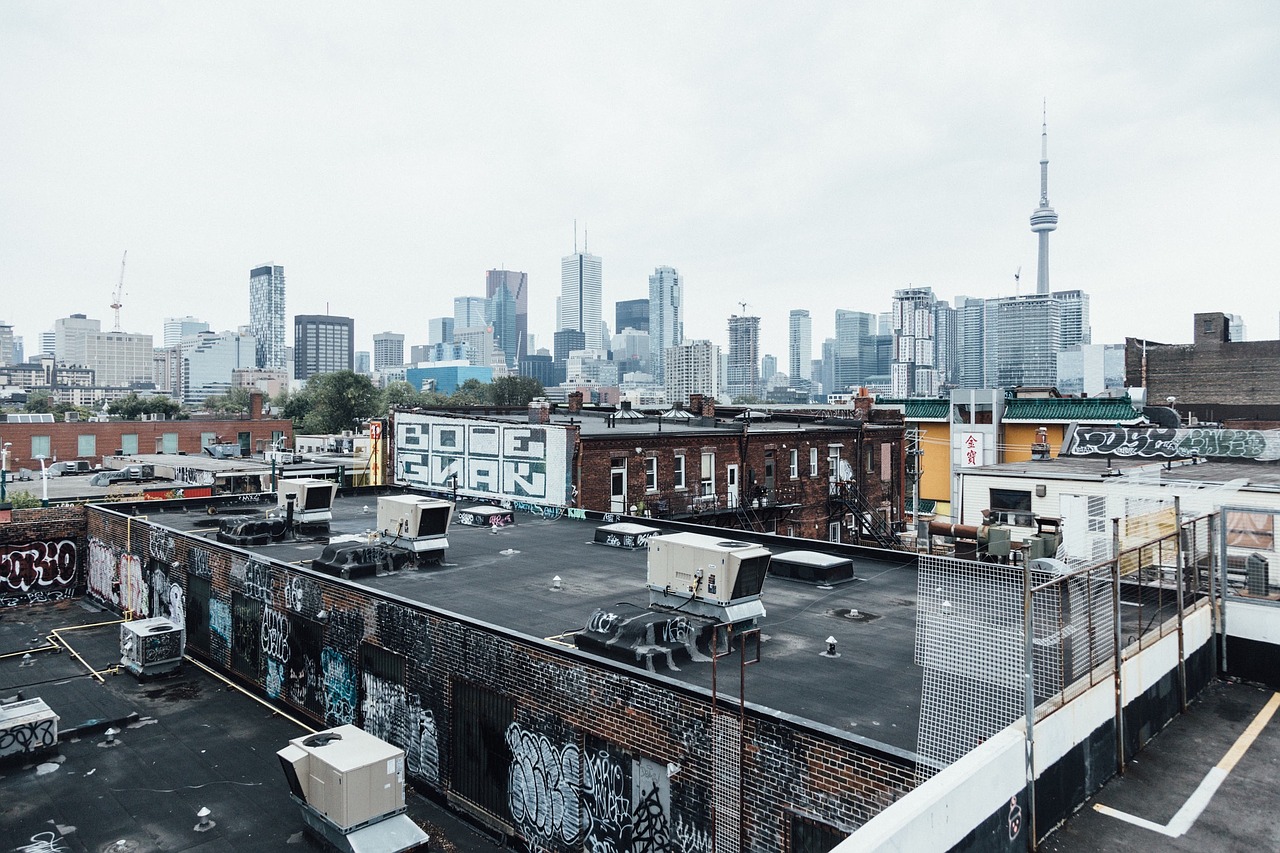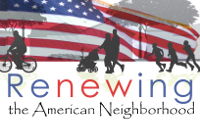By Ed Hubbard and Steve Parkhurst
An overwhelming amount of the coverage of Hurricane Harvey focused on the water and the devastation, and the water again. There was some positive coverage of what our communities did to heal and recover in the aftermath, but not enough. The bad was too dominant to allow the good to shine through. There was an even more important story to be told in the recovery period: The story in the neighborhoods and the people that call them home.
We have put together a report as part of a launch of something we have termed Renewing the American Neighborhood. This report looks at many sources and compiles some of the relevant stories about people taking real action to not only save their neighborhoods, but to assist in healing an entire community. In going through other reports, along with news reports and blog posts, the one word that was continually appearing was “neighbor” or its plural “neighbors.” This is the root of the neighborhood.
From the earliest days of America, our nation had this spirit. Alexis de Tocqueville observed it in his chronicle, Democracy In America, when he wrote, “Americans of all ages, conditions, and all dispositions constantly unite together.”
Ed Hubbard wrote along these lines previously,
What I have been advocating is what I understood to be an approach to government based on those principles drawn from the history of our experiences, of which de Tocqueville wrote and Reagan championed: an approach to re-building our society for the 21st Century based on its original purposes and principles—a society built on the foundational relationships formed in families, neighborhoods, congregations, private organizations; facilitated through the activities of free markets and free trade; and then preserved and protected by local, state and federal governments, each acting within their own sphere of competence and responsibility. It is our adherence over the centuries to these original purposes and principles, which has made us “exceptional”.
This is important to note. The precepts at the root of Renewing the American Neighborhood are not exclusively about disaster recovery. In the days of political campaigning, especially before computers, local organizers would canvass a neighborhood. These organizers knew when neighbors moved out, and scratched them off their voter lists. The organizers also knew when neighbors moved in, and promptly registered them to vote, assuming of course they were of the same mindset. This type of community knowledge is less common now in most places. Some will say this disappeared with the proliferation of television and air conditioning, when people left the front porch and opted for the living room.
This is what civil society is all about. This is how it functions. It is what Alexis de Tocqueville saw that awed him enough to write about it.
Aid from the federal government has been, is being and will be provided. But it does take a situation like this to realize that the federal government is too bulky to respond well. The things, the intangibles that make the business world work, cannot be applied to government action.
The local governments on the ground opened Houston’s enormous George R. Brown Convention Center as a shelter. And people responded, both volunteers and the people in need of shelter. Eventually these governments opened another shelter at the NRG complex. Churches started talking people in, schools started being turned into shelters. This was all before the federal government could do anything worthwhile.
This is localism. This is what it means to make the local government, the local community, the local neighborhood, the empowered ones to start taking action. When this mindset is fostered and encouraged, when it is the norm, every one and any one can become a leader as the situation unfolds.
Terry Clayton, a resident in a community named Sienna Plantation, said, “I didn’t realize I was being a leader. I didn’t know people were looking to me for answers.” People like Terry are modern day organizers, are people that Robert Woodson has termed “neighborhood healers” and who he has subsequently identified as “antibodies” in the community. People who are closest to the problem, closest to the issue, who know how to block out the problem to reach a solution.
Neighborhood healers such as Jim Bigham and Pablo Szub, who founded the upstart community organization Southwest Houston Alliance (SWHA), offered the help that they could organize in their part of the city. Houston businessman, civic leader and philanthropist, Leo Linbeck III shared his story as well and he labeled people he saw as “rugged communitarians” before noting, “In short, the best governance to rely upon is self- governance.”
This is the Rotary clubs and the church groups, the Kiwanis and the Optimists, it is volunteerism that matters. What makes this unique is also what makes it unpredictable, there is no formal organization, there are not dues and no weekly or monthly meetings; but there is also very little, if any, warning as to when action is needed.
In the world of post-storm analysis, Joel Kotkin aptly noted, “Houston will come back, albeit with some modifications, not because it’s a charity case, but because its people want to stay and rebuild their neighborhoods.”
Our inaugural report, Renewing the American Neighborhood: A Houston Case Study, looks at all of this and puts it into perspective. There is the observation of people like Gary Gillen, and a Team Rubicon volunteer named Nicole Morales. Everyone heard the stories about The Cajun Navy because of the way they stormed in from Louisiana into the danger zones.
And not all of this activity is driven solely by individuals. Businesses small and large played a part in rescue and recovery as well.
Businesses from the local Christ Clinic in Katy, Texas to mega-grocers like H-E-B and Kroger also helped in the immediate aftermath of Harvey. The story of business involvement needs to be told and shared because it is indeed such a crucial ingredient to Renewing the American Neighborhood. In a disaster situation, businesses, governments, churches and schools can all respond quicker than the federal authorities.
Story after story reveals that no one needed clearance from anyone to get started in the work that was ahead.
Peggy Noonan writing about the Texas spirit in a Wall Street Journal editorial cited Secretary of Defense James Mattis speaking to American soldiers stationed overseas during a visit with them. Secretary Mattis said, “You just hold the line until our country gets back to understanding and respecting each other and showing it, of being friendly to one another. That’s what Americans owe to one another—we’re so doggone lucky to be Americans.”
Secretary Mattis is correct of course. And we are indeed in the midst of times of turmoil when it comes to our national dialogue and even in our civil discourse. Solving that problem is important, because at root we are talking about a nation of strangers that ultimately unite for a common purpose when the times call for it.
Sheri Faye Rosendahl, writing for HuffingtonPost.com noted, “Our nation as a whole needs to follow Houston’s lead and come together, not only to overcome the turmoil of this storm, but to overcome the turmoil of the oppressive divide we are seeing every day in our nation.”
Localism is not just about helping recover from disasters, it is a way of life that makes neighbors out of strangers and allows for self-governance.
Renewing the American Neighborhood has been an idea for several years now, we have pushed the discussion in various places. We plan to expand our “operation” and increase our presence now, especially while the topic is fresh, and the nation watched lived on television or on social media as the evidence actually unfolded, this was not a college lecture or a book from the 1950s, this was real life happening in the present. It provided us with a textbook example of what we can achieve, if we return liberty to the local levels and empower people to not willingly be victims, but to be active not only in answering the questions, but in asking them.
We hope to enliven a discussion that gets people interested in the concepts that helped in Houston’s ongoing recovery. We invite you to review our report, Renewing the American Neighborhood: A Houston Case Study, and comment widely and vigorously. This is a conversation worth having.
Ed Hubbard is an attorney in Harris County, Texas, who practices complex litigation and appellate law. Ed has been active in civic and political affairs in the Houston area since he came here after graduating from law school at SMU in 1983. Follow Ed’s writings and follow him on Twitter @EdHubbard
Steve Parkhurst is a political consultant, a writer at his blog as well as a Senior Editor here at US Daily Review. Follow Steve on Twitter @SteveParkhurst


